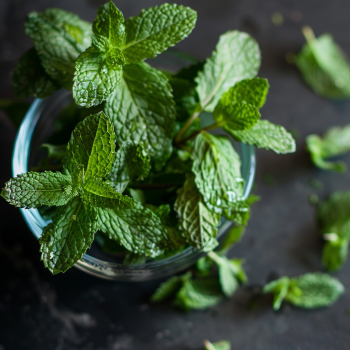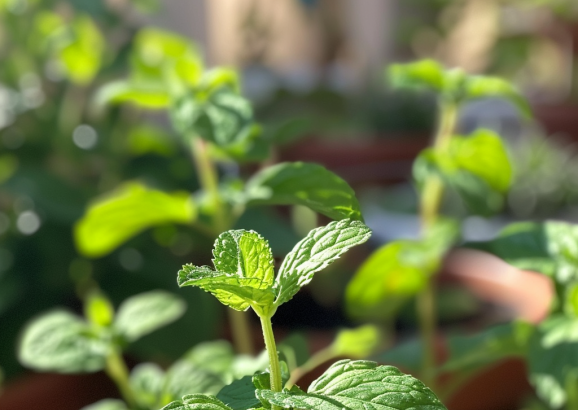Exploring Mint in Greek Cuisine and Gardening

Exploring the rich tapestry of Greek cuisine unveils an aromatic treasure: Mint. This versatile herb holds a sacred place in Greek culinary traditions, infusing dishes with its refreshing flavor and captivating aroma. From classic recipes like tzatziki and Greek salads to succulent lamb dishes, Mint adds a distinctive touch that elevates the dining experience. But its significance extends beyond the kitchen; cultivating Mint in your garden unlocks a world of possibilities, offering a constant supply of this flavorful herb for your culinary creations.
In Greek cuisine, Mint is a beloved ingredient, cherished for its ability to enhance both savory and sweet dishes. Whether it’s sprinkled over grilled meats, blended into creamy dips, or steeped in refreshing teas, Mint lends its bright, minty flavor to a variety of Greek delicacies. Its cooling properties make it a perfect complement to the bold flavors of Mediterranean cuisine, balancing out rich dishes with its refreshing taste. Beyond its culinary applications, Mint also plays a role in Greek herbal remedies, with its soothing properties believed to aid digestion and promote overall well-being.
Growing your own Mint garden
This is a rewarding endeavor that allows you to enjoy the freshest, most flavorful herbs right at your fingertips. To start, select a sunny location with well-drained soil for your Mint plants. Mint thrives in full sun but can tolerate partial shade, so choose a spot that receives at least six hours of sunlight per day. Prepare the soil by amending it with organic matter, such as compost or aged manure, to improve drainage and fertility. Once the soil is prepared, sow Mint seeds or plant seedlings, spacing them about 18 inches apart to allow room for growth.
When caring for your Mint garden, keep the soil consistently moist but not waterlogged. Water deeply whenever the top inch of soil feels dry to the touch, and mulch around the base of the plants to help retain moisture and suppress weeds. Mint is a vigorous grower and may spread rapidly, so consider planting it in containers or using barriers to contain its growth if desired. To encourage bushy growth and prevent legginess, pinch off the tips of the stems regularly and harvest the leaves frequently. With proper care, your Mint garden will flourish, providing you with a bountiful harvest of fresh, flavorful herbs throughout the growing season.
Harvesting
This is a simple yet rewarding task that allows you to enjoy the full flavor and aroma of this versatile herb. For the best results, harvest leaves in the morning when their essential oils are most concentrated. Simply snip off the top few inches of the stems using sharp scissors or pruning shears, leaving some foliage behind to allow the plant to continue growing. You can harvest Mint leaves as needed throughout the growing season, taking care not to remove more than one-third of the plant’s foliage at a time. If you have an abundance of Mint, consider drying or freezing the leaves for later use.
Drying Mint
This is a simple process that involves bundling the stems together and hanging them upside down in a warm, well-ventilated area until the leaves are crisp. Alternatively, you can freeze the leaves by placing them in a single layer on a baking sheet and freezing them until solid before transferring them to a freezer bag or container. By harvesting and preserving your harvest, you can enjoy the fresh flavor of this aromatic herb year-round in your favorite culinary creations.
Key Takeaways
- Discover the versatile uses and benefits of growing this herb in your home garden.
- Learn the essential steps for planting and harvesting successfully.
- Understand the unique growing requirements and care techniques for mint plants.
- Explore the diverse varieties and choose the best ones for your climate and needs.
- Unlock the secrets to preserving and storing your harvest for year-round enjoyment.
Top Ten Greek Herbs
Greek Chicken Recipes
Honey Garlic Chicken
Discover a delightful blend of sweet and savory in this easy-to-make Honey Garlic Chicken recipe. Perfect for weeknight dinners or special occasions, this dish features tender chicken glazed with a rich honey garlic sauce. Serve it with a side of steamed vegetables or rice for a complete meal.
Honey Chicken Glazed
This recipe offers a perfect balance of sweet honey glaze and savory chicken. The dish is simple yet flavorful, making it ideal for busy weeknights or a casual dinner with friends. Pair it with a fresh Greek salad or roasted potatoes to enhance your meal.
Chicken Gyro Marinade
Learn how to make a flavorful marinade for traditional Greek chicken gyros. This marinade, featuring Greek yogurt, lemon juice, garlic, and herbs, ensures that the chicken is tender and full of authentic Greek flavors. Perfect for grilling or baking, these gyros are sure to be a hit at any gathering.
Greek Chicken and Potatoes
A classic Greek dish combining roasted chicken and potatoes with lemon and herbs. This hearty meal is easy to prepare and packed with flavor, making it a favorite for family dinners. Serve it with a side of tzatziki and warm pita bread for a complete Greek experience.
Celebrity Chefs on Chef on a Bike YouTube
Greek TV Chef Anna-Maria Barouh
Facebook: Anna-Maria Barouh
Instagram: annamariabarouh
- Celebrity Chef, Food Stylist, Recipe Developer Anna Maria Barouh is our guest on Chef on a Bike. Anna-Maria is a regular on Greek Television and has a very popular food blog and is a magazine contributor.


















